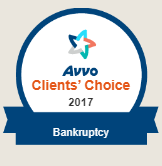Your credit card balance is out of hand. You have medical bills rolling in from the surgery your spouse had last year. Your boss informed you that the company is doing away with bonuses, which, in your case, amounts to a significant portion of income. One of your kids needs braces and you weren’t able to make a mortgage payment the last two months.
One thing’s for sure: You’re definitely not alone in your struggle. Many California residents are facing similar financial crises. In fact, you’d be hard-pressed to find someone who hasn’t had financial problems at some point in their lives. Bankruptcy has helped a lot of people restore financial stability. If you think immediate debt relief is for you, you’ll want to learn more about Chapter 7 and Chapter 13 bankruptcy.
The wage earner’s debt relief
If you plan to file for bankruptcy, you need to make sure you can fulfill the eligibility requirements associated with the chapter you choose. Chapter 13 bankruptcy is known as the wage earner’s debt relief. This is because in order to qualify, you must have reliable income. With Chapter 13, you should be thinking in terms of reorganizing your debt payment schedule.
There are limits regarding how much secured or unsecured debt you can have when petitioning the court for Chapter 13 bankruptcy. It typically takes three to five years to complete a Chapter 13 plan. The good thing is you will likely get to keep your house and other major assets.
A complete liquidation plan
Before filing for Chapter 7 bankruptcy, you must take a means test. This shows whether your income level is at or below the required amount to obtain this type of debt relief. It’s a complete liquidation plan. Your assets are valued and sold, and the trustee uses the proceeds to pay your creditors. However, much of your property may fall within certain exemptions. You may want to see what property you would keep under this chapter before moving forward.
It doesn’t take as long to discharge debts via Chapter 7 as a restructured payment plan might with Chapter 13. You can usually complete a Chapter 7 program in less than six months.
Post-bankruptcy credit rating
While it’s true that filing for bankruptcy will show on your credit report, it may not be as bad as you think. Chapter 7 typically stays on a report for 10 years. Chapter 13 will likely disappear from your report in seven years’ time.
Knowing which type of bankruptcy best fits your immediate financial needs and ultimate goals can be tricky. Many California residents take advantage of legal resources available to them, such as asking an experienced bankruptcy law attorney to clarify requirements and help navigate the process.



